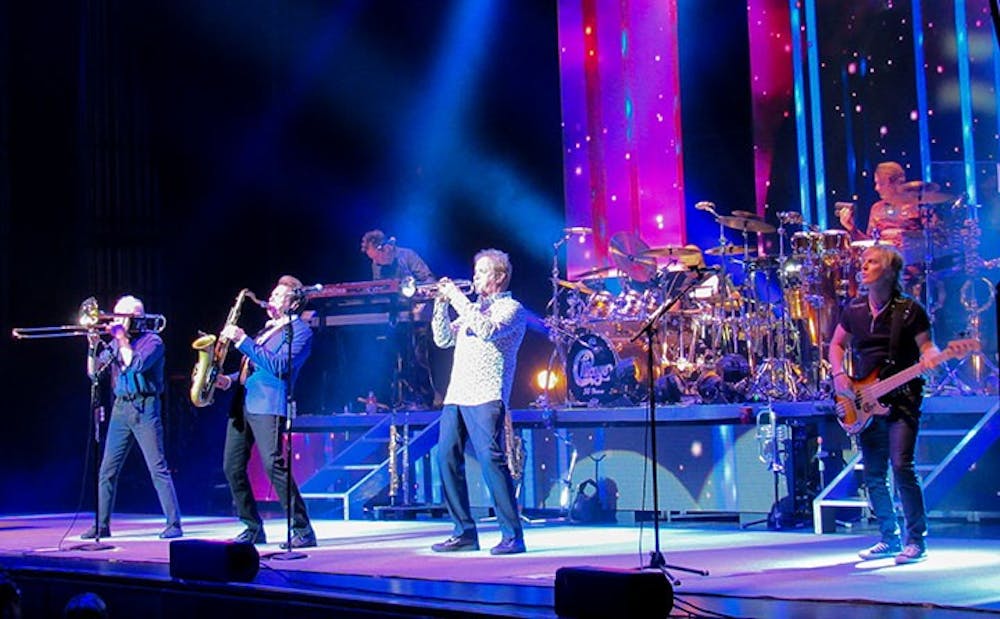It has been more than 40 years since Chicago first performed at Shippensburg University.
It was spring of 1970 and chattering excitement saturated the air as students flocked to Reisner Dining Hall’s Susquehanna Room for a performance by rising band Chicago Transit Authority, Douglas Bietsch a 1974 SU graduate recalled.
Bietsch was a freshman member of the on-campus theater club called Masquers in 1970, which was in charge of working the lighting for the concert. At the time campus musical venues were scarce and the only performance site at SU was Memorial Auditorium, which was likely already booked. So Reisner Dining Hall employees turned their ladles in early and instead of food, students received their fill with music.
“Chicago was a popular up-and-coming group and there was not any other performing space within an hour’s drive,” Bietsch said. “The convenience of seeing a live concert right on campus made the tickets sell out very fast.”
On Nov. 16 Chicago Transit Authority returned to SU for a sold out H. Ric Luhrs Performing Arts Center crowd while sporting a shortened name — Chicago.
Filing onto campus, headlights mimicked Christmas string lights as they lined the roads, and remnants of the ’70s materialized. Nearly indistinguishable from a multi-decade old memory, chattering excitement again saturated the air as fans flocked to the Luhrs Center for a performance by Rock and Roll Hall of Fame band Chicago.
The Luhrs Center’s nearly 1,500 seats were not lonely for long as many seats were greeted with their eager concertgoers quite some time before the 8 p.m. show’s start. Following the early arrivers, the rest of the attendees slowly funneled in until no holes were left in the closely-knit theater.
Chicago emerged from behind the stage’s somber curtain arms and bartered music for ovation.
For the first half of its set list, Chicago performed songs from its Grammy-nominated album “Chicago II” including “Movin’ In,” “Wake Up Sunshine,” hit song “25 or 6 to 4,” and all seven songs from the album’s multi-part song succession titled “Ballet For a Girl in Buchannon.”
While performing songs from “Chicago II,” the band flipped the hourglass as a screen in the background gleamed with footage of the original members on the road during their early years of touring — adding the sentiment of time progression to the progression of songs.
While the entirety of Chicago Transit Authority’s original seven are no longer traveling together for various reasons, a few of the beginning members have taken it upon themselves to preserve the likeness of the band for their fans.
“None of this would have meant anything if you didn’t take it and give it life,” James Pankow the original trombonist for Chicago Transit Authority said.
Audibly, Chicago’s performance was nothing less than a unique musical experience that embodied the band’s authentic rock meets orchestra tones rather than altering its sound to conform with modern popular music.
Following a brief intermission, Chicago emphasized songs from its debut self-titled album including “I’m a Man” and “Does Anybody Really Know What Time It Is?” along with hit songs “You’re the Inspiration” and “Hard Habit to Break” from 1984 album “Chicago 17.”
Chicago band members’ vivacity while performing on stage was fluid with the vivacity that fans sported throughout the night. In between parts of the song that demanded his lungs, Pankow twirled his instrument around like a sweet woman and during percussion solos, Walfredo Reyes Jr., sprung up and down rhythmically to the thumps of his drums.
After growing bored of wiggling in their seats to Chicago’s catchy songs, fans rose to their feet for the final songs of the night and shook, swayed and chanted along until the band’s last note fell to silence.
Over the decades fans have cultivated Chicago to rise from small venues to sold out crowds and SU has served as a witness to this.




The Slate welcomes thoughtful discussion on all of our stories, but please keep comments civil and on-topic. Read our full guidelines here.